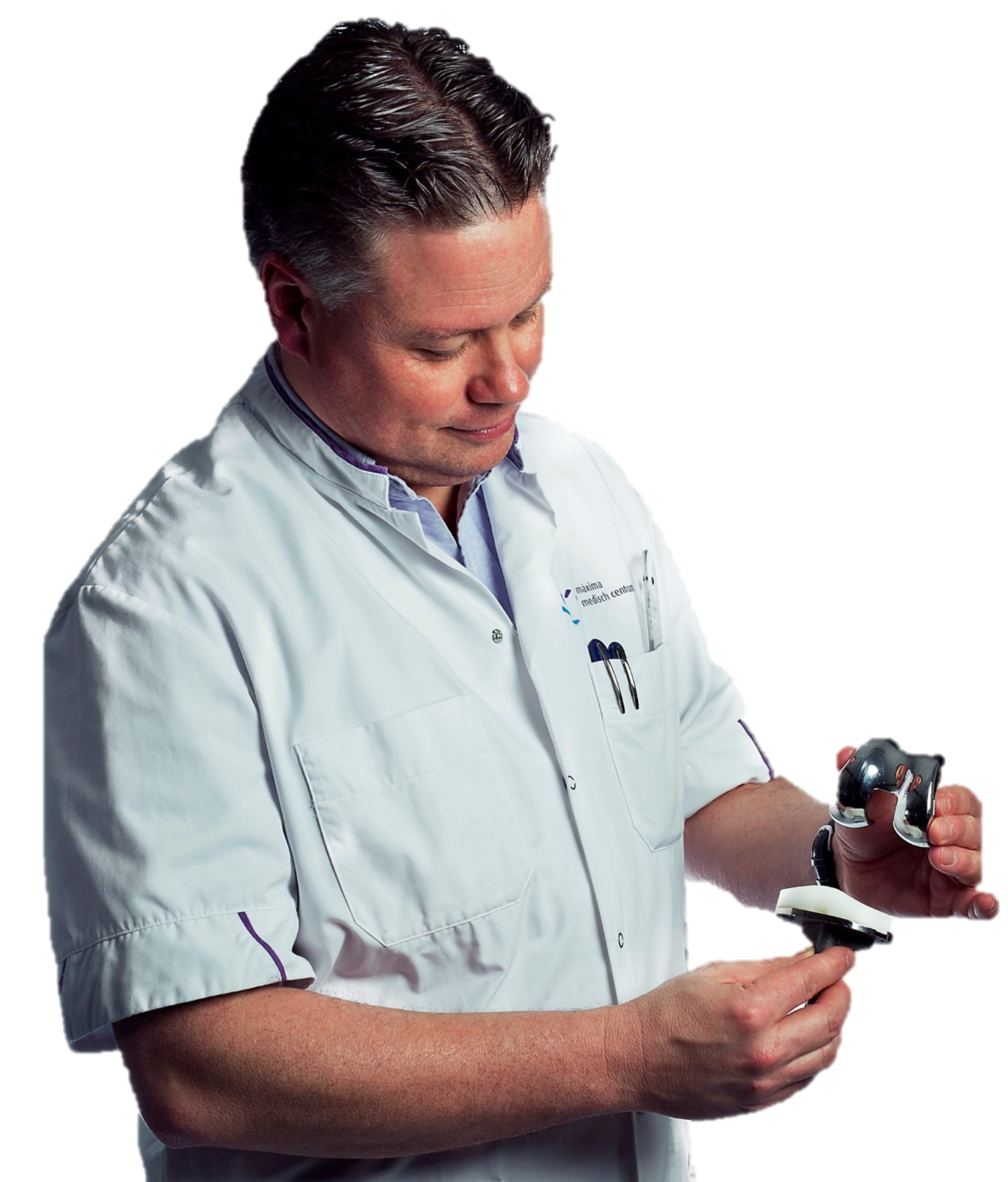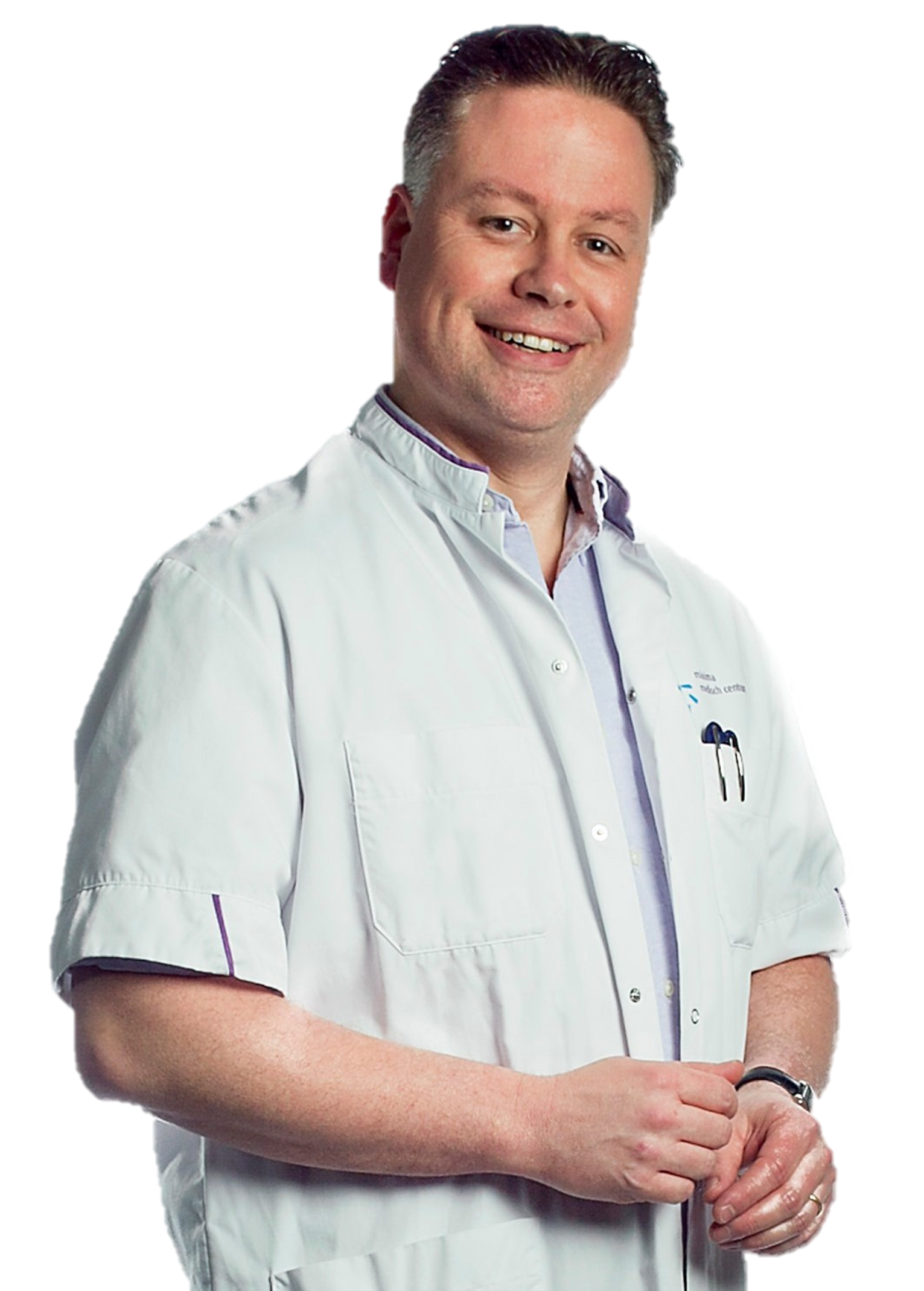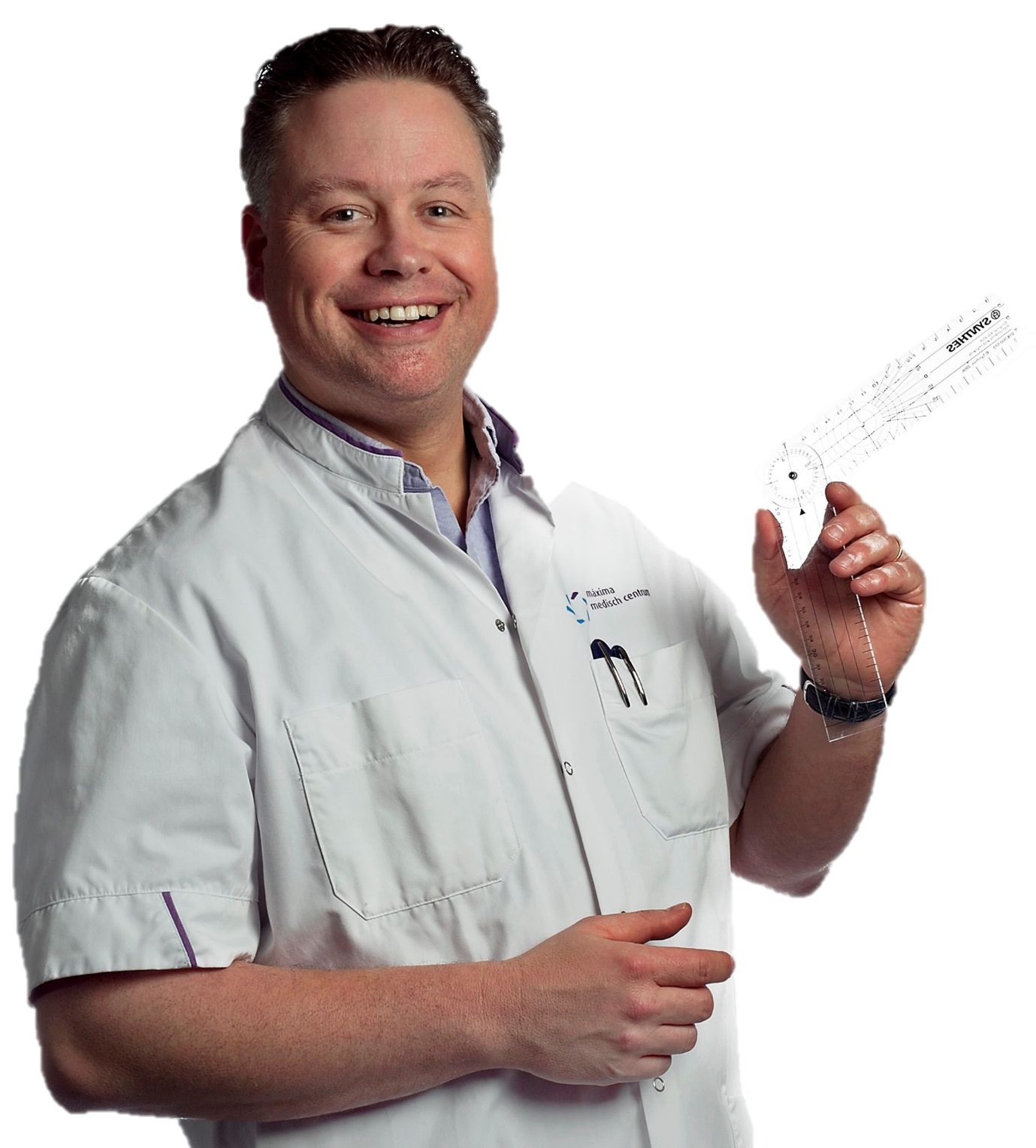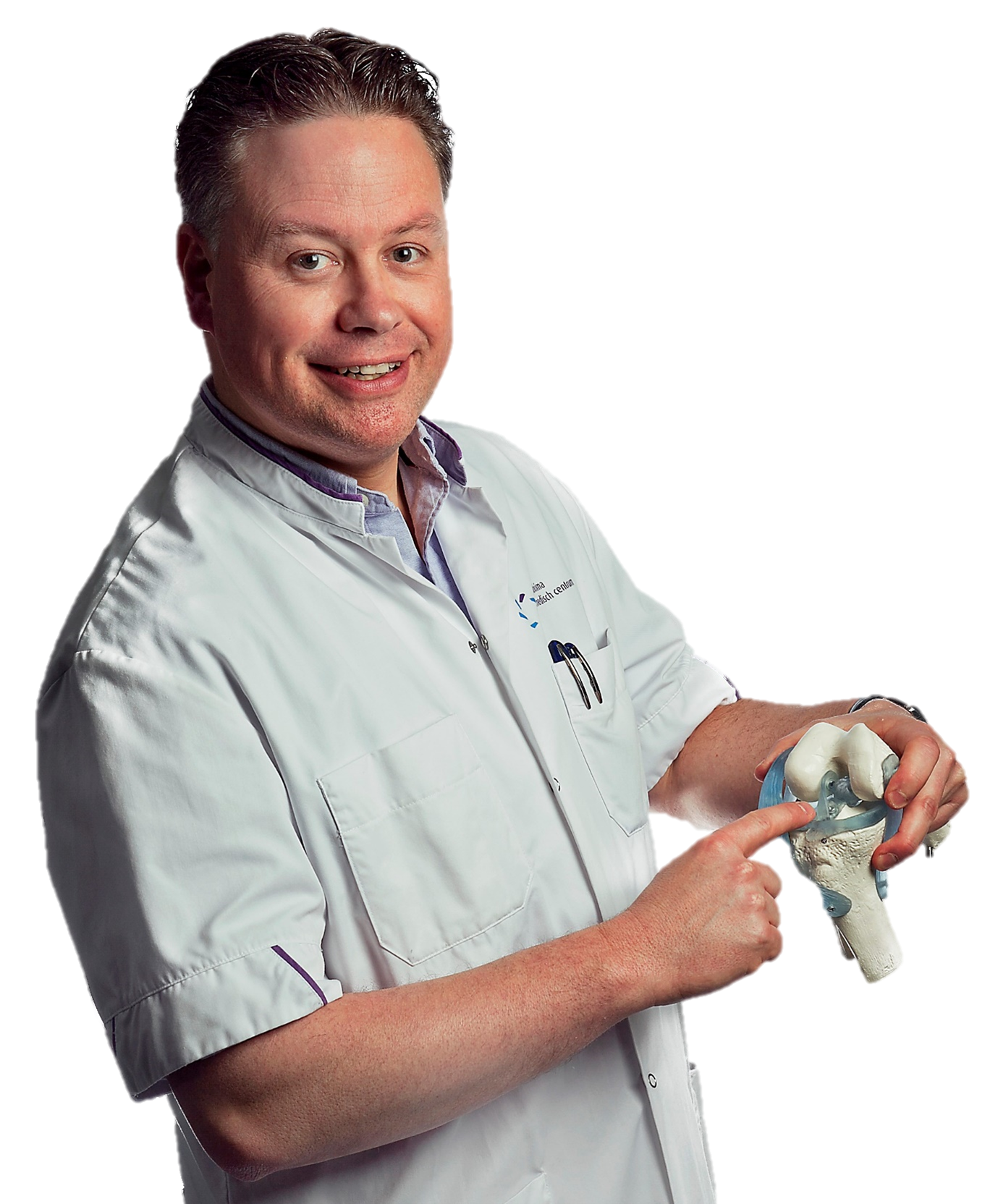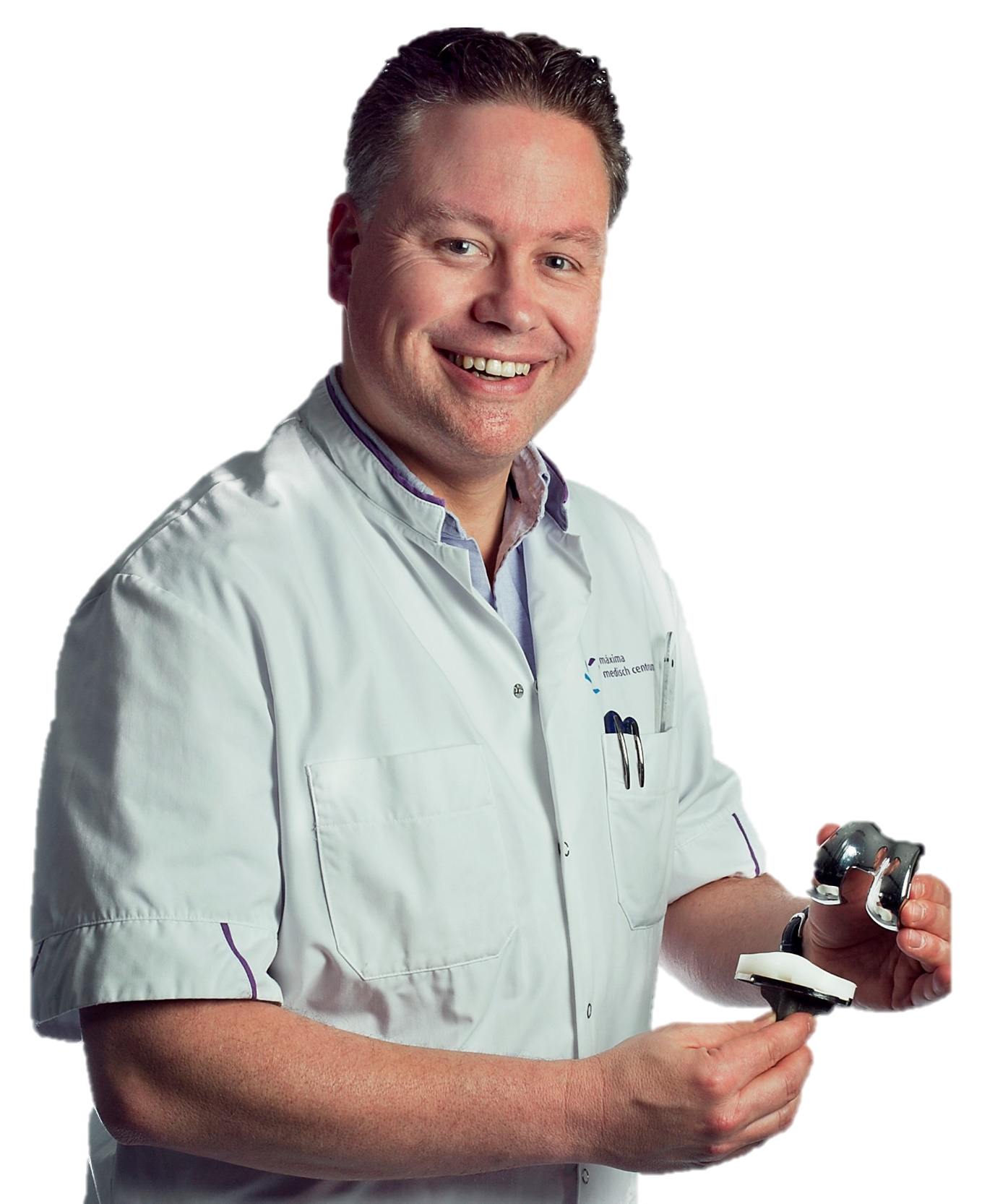STARR Study Group, Meuffels, D. E., &...
New publication
STARR Study Group, Meuffels, D. E., &...
New publication
Arens T, Melick van N, van der Steen MC, Janssen...
Editor’s Pick Prof Stafano Zaffagnini Journal of Experimental Orthopaedics
Meniscus
The meniscus can tear during squatting, sports, or torsional trauma to the knee. The torn meniscus can be treated in three ways during an arthroscopy: meniscectomy, spontaneous healing or suturing (see Meniscus and Keyhole surgery). On this web page you can read RPA Janssen’s treatment recommendations after meniscus operations.
Meniscectomy
Meniscectomy means removing meniscus. This is almost always a partial meniscectomy. The knee may be fully loaded. There are no restrictions in movement: full bending and extension are allowed. As a rule, the patient can exercise himself (eg exercise bike) to restore knee function. Cycling is allowed as soon as the knee bends 100º. Physiotherapy is only necessary if you have an inadequate gait pattern or limited knee function. This is assessed at the time of the first outpatient visit after surgery. Hydrops can still occur for several weeks. After a lateral meniscectomy, it can take months for the knee to recover from sports activities. The load capacity in sports may be built up after 6 weeks depending on swelling and pain in the knee.
Stable, partial meniscus injury
Meniscus tears, < 1 cm in well perfused area, can heal spontaneously. It is important not to kneel/squat for 3 months to promote healing. The knee may be fully loaded according to the pain. Bending and extension of the knee in ADL is allowed. Cycling is allowed as soon as the knee bends 100º. Physiotherapy is only necessary if you have an inadequate gait pattern or limited knee function. This is assessed at the time of the first outpatient visit after surgery. Hydrops can still occur for several weeks. After a lateral meniscectomy, it can take months for the knee to recover from sports activities. The load capacity in sports may be built up after 6 weeks depending on swelling and pain in the knee.
Stable, partial meniscus injury
Meniscus tears, < 1 cm in well perfused area, can heal spontaneously. It is important not to kneel/squat for 3 months to promote healing. The knee may be fully loaded according to the pain. Bending and extension of the knee in ADL is allowed. Cycling is allowed as soon as the knee bends 100º. Physiotherapy is only necessary in case of impaired gait and limitation in knee function. Open chain practice of knee function is allowed. Pain with deep bending is a sign that this still needs to be limited. Hydrops can last for weeks. After three months, the full flexion can be practiced, built up on the basis of pain complaints and hydrops. If there is also an anterior cruciate ligament rupture, it will be reconstructed within the foreseeable future. Before reconstruction can take place, the knee must meet the 3 criteria of Millet (Am J Sports Med 2001): 1. Active dynamic gait (possibly with crutches), 2. Limited hydrops and 3. Almost complete ROM. The physiotherapist can play an important role in this. The chance of arthrofibrosis of the knee is then <1% with the new procedure.
Meniscus suture
Meniscus suturing may be useful for fresh tears in a well-perfused area in young patients. These are unstable meniscus tears larger than 1 cm. It is important to walk for 6 weeks with 2 crutches (also at home!) and to avoid kneeling/squatting for three months. It is allowed to bend the knee. A brace is only necessary for severe knee instability. The physiotherapist can help restore gait patterns, ROM exercises and isometric home exercise programs. After 6 weeks, the load may be increased on the basis of pain complaints and hydrops. If there is also an anterior cruciate ligament rupture, it will be reconstructed within the foreseeable future. Before reconstruction can take place, the knee must meet the 3 criteria of Millet (Am J Sports Med 2001): 1. Active dynamic gait (possibly with crutches), 2. Limited hydrops and 3. Nearly full ROM. The physiotherapist can play an important role in this. The chance of arthrofibrosis of the knee is then <1% with the new procedure.

